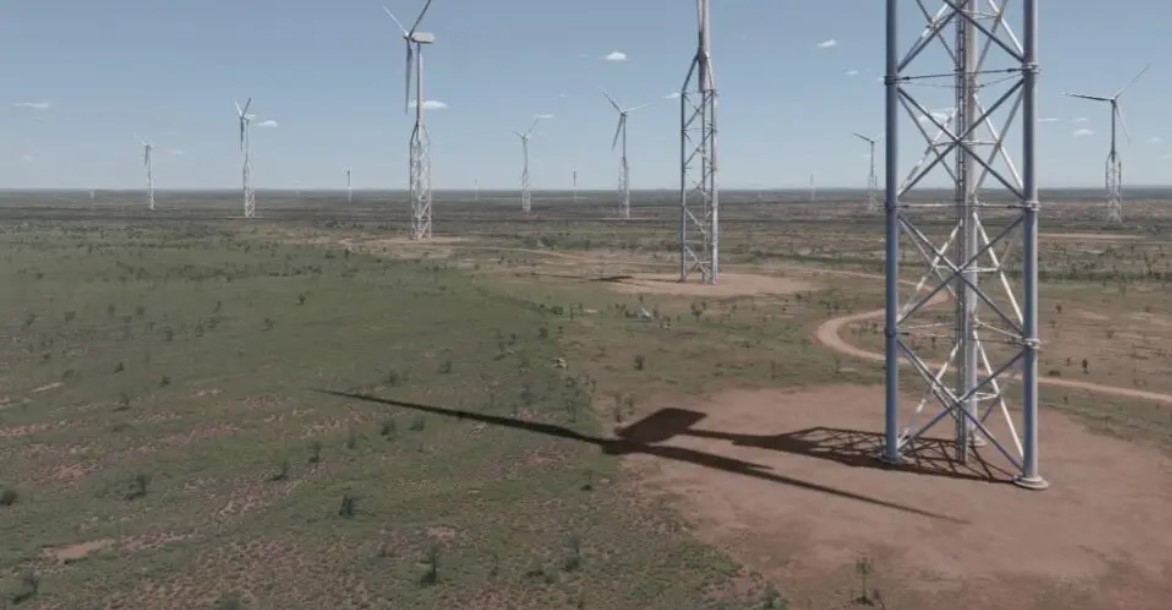Fortescue lays out plans for biggest wind farm in Australia to help eliminate fossil fuels at giant mines
Australian mining giant Fortescue is proposing to construct a huge 2.1 gigawatt (GW) wind farm and battery energy storage system (BESS) to help eliminate the burning of fossil fuels at its giant Pilbara iron ore operations.
The 2.1 GW facility would be the biggest wind farm in Australia if built now, and is part of the company’s plans to reach “real zero” at its iron ore mining operations, which means eliminating the use of fossil gas or diesel for terrestrial transport and power at those facilities.
The company is already sourcing some of its mining power needs from solar farms at Chichester (60 MW) and North Star (100 MW), and has recently begun construction of a 190 MW solar farm at Cloudbreak and also unveiled plans for a 660 MW solar facility at Turner River, south of Port Hedland.
Fortescue has also signed a $4 billion contract to deploy hundreds of giant electric haul trucks, bulldozers, excavators and other mining equipment to eliminate the use of diesel.
The 2.1 GW wind facility is part of Fortescue’s planned East Pilbara Generation Hub (EPGH), which will support its mining operations at its new Iron Bridge mine located approximately 40km southeast of Marble Bar in Pilbara, WA.
The company submitted initial environmental permitting documents with WA’s Environmental Protection Authority (EPA) on Friday, which are now subject to a seven-day public comment period.
The hub will comprise up to 200 individual wind turbines and five substations located across 2,318 hectares of land, connecting to the company’s magnetite mining site via a 220kV transmission line.
The turbines are interesting, because they will need to be at least 10 MW each, easily the most powerful every installed in Australia, and Fortescue is proposing “self erecting” Nabralift towers – made by Nabrawind – that are 290 metres eye at the blade tip.

The turbines use a lattice-style structure for the turbine towers. Fortescue has made two investments in the Spanish-based Nabrawind over the last two years.
Fortescue says wind energy is the best alternative at the site, given it does not want to continue using fossil fuels, and solar at such scale would haven footprint issues, as well as limitations on operating hours.
Through the replacement of diesel and gas-fired generation systems, Fortescue says the EPGH project will cut annual emissions at the Iron Bridge site by at least 1.5 million tonnes of CO2-equivalent.
Although the co-location of energy storage was mentioned within the application, capacity and technology of the potential BESS was unspecified.
Fortescue also noted that the projected 2.1GW wind capacity at the site “could increase depending on the efficiency of the turbine equipment” it chooses to deploy.
Construction of the project is expected to commence once all necessary permits have been obtained, which is currently estimated to be towards the end of 2026.
Based on this timeline, and the fact construction is expected to take approximately 42 months to complete, Fortescue is aiming to have the project up and running sometime during 2029.
More infomation: https://reneweconomy.com.au/fortescue-lays-out-plans-for-biggest-wind-farm-in-australia-to-help-eliminate-fossil-fuels-at-giant-mines/


